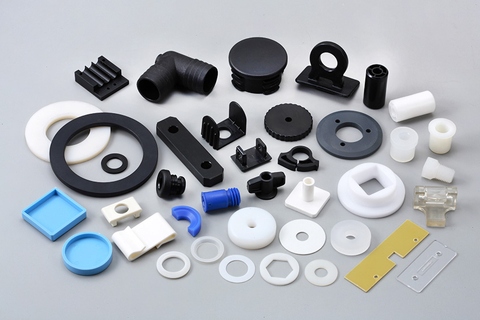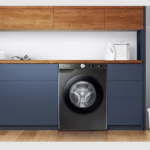In the rapidly advancing manufacturing technology era, discerning the appropriate injection molding techniques is crucial. Customizing these processes according to unique manufacturing specifications can not only improve production methods but also optimize quality and efficiency.
In this article, we will dive deep into three fundamental injection molding methods: High-Density Polyethylene (HDPE), Polyvinyl Chloride (PVC), and Poly (Methyl Methacrylate) (PMMA) molding. By dissecting their principles, application areas, and advantages, we aim to provide a broader understanding of injection molding. This will assist businesses with such injection molding needs in better choosing the manufacturing technology that suits them.
What is HDPE Injection Molding?
High-density polyethylene (HDPE) injection molding is a manufacturing process that uses high-density polyethylene, a strong and flexible thermoplastic material.
Known for its high strength-to-density ratio, HDPE is commonly used in the production of plastic bottles, corrosion-resistant pipes, and plastic lumber.
The HDPE injection molding process involves melting this material at high temperatures and extreme pressures to shape it into the desired form, resulting in durable and recyclable final products.
What are the Key Applications of HDPE Injection Molding?
High-Density Polyethylene (HDPE) Injection Molding, owing to the unique characteristics of HDPE, finds a wide array of applications across various industries.
One of the primary sectors benefiting from HDPE injection molding is the packaging industry. The technique is commonly used to manufacture containers, jars, plastic caps, and other packaging materials due to HDPE’s durability and chemical resistance. Its food-safe properties also make HDPE molded items ideal for food and beverage packaging.
In the automotive industry, HDPE injection molding plays a vital role in the production of several components. From interior parts such as dashboards and cup holders to under-the-hood components like reservoirs and tanks, HDPE’s resilience and impact resistance make it a preferred choice.
HDPE injection molding is also integral to the construction industry. HDPE’s resistance to mold, rot, and insects, coupled with its durability, makes it perfect for the manufacture of building materials such as piping, geomembranes, and plastic lumber.
The agriculture industry too takes advantage of HDPE injection molding. The technique is used to create irrigation systems, protective covers for plants, and other farming tools and equipment, thanks to HDPE’s weather resistance and recyclability.
Finally, in the medical sector, HDPE injection molding is used to produce non-invasive medical devices, bottles, and containers. HDPE’s ability to withstand sterilization processes and its resistance to most chemicals make it suitable for these applications.
How to explain PVC injection molding?
Polyvinyl Chloride (PVC) Injection Molding is an advanced manufacturing technique that involves transforming PVC—a widely-utilized plastic material—into a variety of sturdy and practical products.
The distinctiveness of PVC injection molding lies in the inherent properties of PVC. It is a plastic polymer that can be tailored to exhibit a broad range of hardness and flexibility. This adjustability allows manufacturers to tweak the properties of the final product to meet specific demands, thus extending the versatility of PVC injection molding.
How Does PVC Injection Molding Stand Up to Other Molding Techniques?
PVC injection molding holds a significant position in the spectrum of molding techniques due to its several unique attributes.
When compared to other methods, PVC injection molding offers exceptional versatility. Given the adjustable hardness and flexibility of PVC, it can be customized to fulfill a wide variety of product requirements, making it a highly adaptable molding process.
In terms of durability, PVC injection molded products are hard to beat. They are robust, resistant to most forms of wear and tear, and capable of withstanding harsh environmental conditions. This feature makes PVC injection molding a preferable choice for manufacturing long-lasting components.
Another advantage of PVC injection molding is its cost-effectiveness. The raw material, PVC, is relatively inexpensive, and the molding process is efficient and suitable for mass production, which contributes to reduced overall manufacturing costs.
However, the PVC injection molding process also has its challenges. One key drawback is its environmental impact. Unlike some other plastics like HDPE, PVC isn’t easily recyclable. When burned, it can release toxic fumes, necessitating careful waste management.
In terms of processing, PVC requires careful handling during the molding process due to its sensitivity to temperature. If overheated, PVC can degrade, causing issues with the final product’s quality.
Decoding the Mechanics of PMMA Injection Molding
PMMA Injection Molding is a manufacturing technique that involves the use of Poly (Methyl Methacrylate), or PMMA, a clear and rigid plastic that is widely known as acrylic or Plexiglas.
This process involves heating PMMA to a fluid state and then injecting it into a mold to cool and solidify. PMMA’s standout property is its high transparency, comparable to that of glass.
The distinguishing feature of PMMA injection molding lies in the properties of PMMA itself. This thermoplastic offers exceptional clarity, making it a substitute for glass in many applications. In addition, it provides excellent weatherability and UV resistance, adding to its appeal.
What are the Prime Applications of PMMA Injection Molding?
The clear and robust properties of PMMA make it a versatile material for a wide array of applications across different industries through injection molding.
In the automotive industry, PMMA is used in the production of various components like taillights, headlights, and dashboard dials. Its excellent light transmittance and weatherability properties make it an ideal material for these applications.
The optics industry also heavily relies on PMMA injection molding. Owing to its high optical clarity and light transmittance, PMMA is widely used in the manufacture of lenses, including those in glasses, cameras, and binoculars.
In the construction and architecture sector, PMMA’s weather resistance and clear properties make it perfect for applications such as skylights, noise barrier walls, and even transparent structural elements in modern architecture.
The medical industry utilizes PMMA for creating various medical devices like dentures and intraocular lenses. Its biocompatibility, transparency, and resistance to UV light make it an excellent choice for these applications.
Finally, PMMA’s transparency and durability also make it a popular choice for aquarium tanks where clear visibility and resistance to pressure are crucial.
Conclusion
In summary, we can learn about the unique advantages, performance characteristics and application areas of three typical injection molding processes for high-density polyethylene (HDPE), polyvinyl chloride (PVC) and polymer (methyl methacrylate) (PMMA) molding.
In actual production, choosing the right technology according to the requirements of a specific project is a sure way to obtain a high-quality product!







